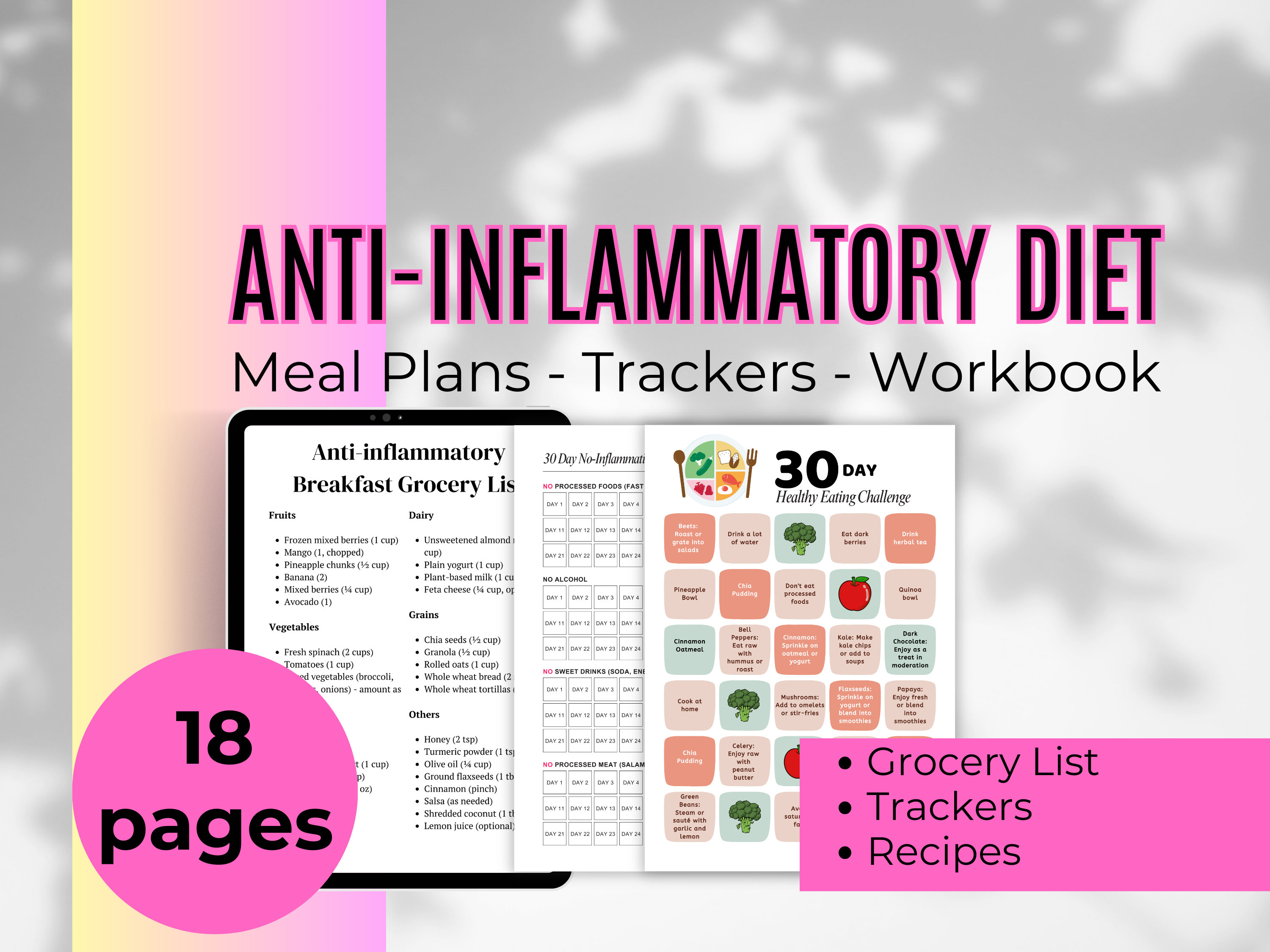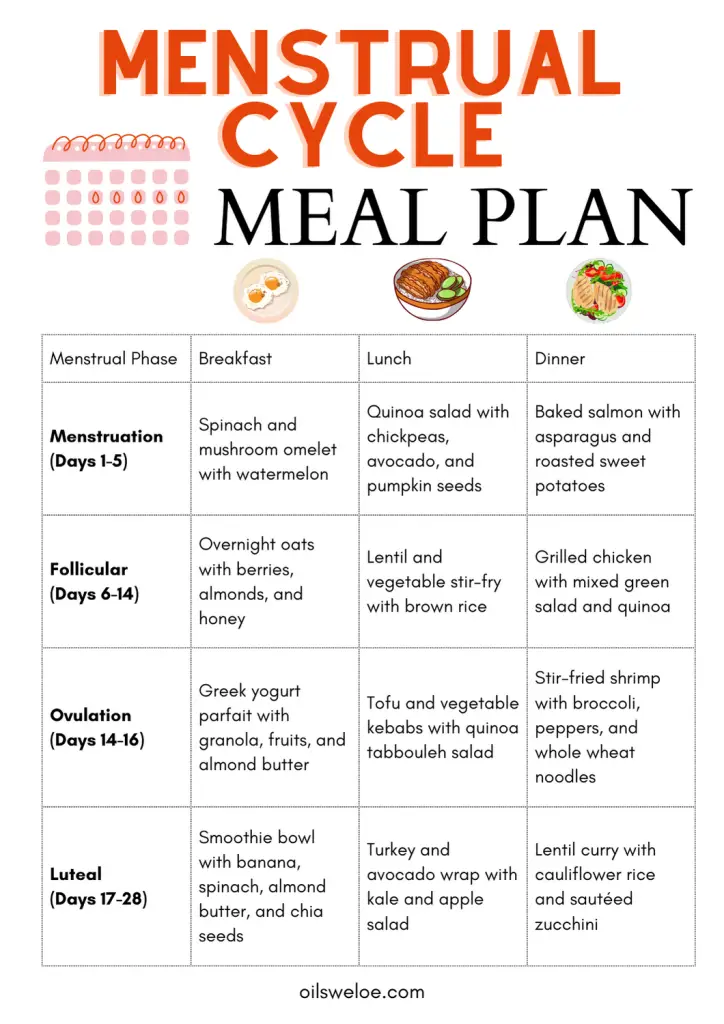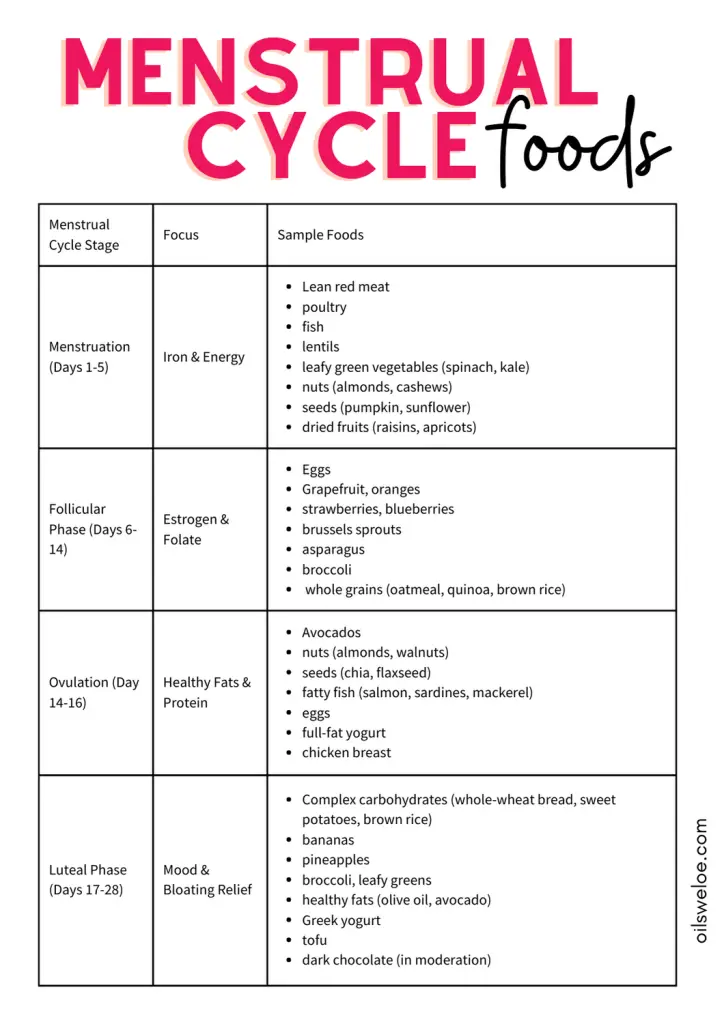Understanding the menstrual cycle goes beyond just tracking your period—it can also guide your food choices for optimal health. Each phase of the cycle comes with its own set of nutritional needs and challenges. By strategically incorporating the right foods, you can support your body and improve your overall well-being.
In this article, we will explore the importance of nutrition during each menstrual cycle phase and highlight the best foods to consume for maximum benefit. Whether you’re looking to boost energy, balance your hormones, or ease PMS symptoms, adjusting your diet according to your cycle can make a significant difference in how you feel. So let’s dive in and learn how to nourish your body throughout the month!
Foods for Menstrual Phase
The menstrual phase marks the beginning of the menstrual cycle, characterized by the shedding of the uterine lining. During this time, women may experience fatigue and a drop in iron levels due to blood loss. It is crucial to replenish these nutrients to support overall health and well-being.

- 2-Week anti-inflammatory meal plan.
- 45 Foods that Cause Inflammation
- 31 Things to Avoid on Food Labels
- Grocery Lists. Challenges. Symptoms Tracker
Iron-rich foods such as lean red meat, poultry, fish, beans, and fortified cereals are essential for replenishing the lost iron during menstruation. Zinc-rich foods like nuts, seeds, and whole grains can also help in supporting the immune system and promoting healing.
Staying hydrated is key during this phase to help combat fatigue and headaches. Drinking plenty of water and consuming foods with high water content, such as fruits and vegetables, can aid in reducing bloating and maintaining proper fluid balance.
Incorporating anti-inflammatory foods like leafy greens, berries, and fatty fish can help alleviate menstrual cramps and reduce inflammation in the body. These foods can also provide essential nutrients and antioxidants to support overall health during this phase.
By paying attention to nutrient needs and focusing on iron-rich, zinc-rich, hydrating, and anti-inflammatory foods, women can better manage their energy levels and support their bodies during the menstrual phase. Stay tuned for more tips on the best foods to consume during the other phases of the menstrual cycle.
Foods for Follicular Phase
During the follicular phase of the menstrual cycle, which occurs right after menstruation, it’s all about gearing up for increased activity levels. This phase is characterized by rising estrogen levels and a surge in energy, making it the perfect time to focus on consuming energy-boosting foods.
Energy-boosting foods: Incorporating foods that are rich in complex carbohydrates, such as whole grains, sweet potatoes, and fruits, can help sustain energy levels throughout the day. These foods provide a steady release of glucose, keeping you feeling alert and ready to tackle any challenges.
Vitamins and minerals: To support hormone production during this phase, prioritize foods high in vitamins B and D, as well as minerals like magnesium and calcium. Leafy greens, eggs, fatty fish, and nuts are excellent sources of these nutrients and can help maintain hormonal balance.
Fiber-rich foods: Including fiber-rich foods like legumes, vegetables, and seeds in your diet can aid in digestion support during the follicular phase. Fiber promotes healthy gut bacteria and regulates bowel movements, ensuring that you feel light and energized throughout the day.
By focusing on these key nutrients and incorporating energy-boosting, nutrient-dense foods into your diet during the follicular phase, you can set yourself up for success and make the most of this dynamic phase of your menstrual cycle. So, fuel up with the right foods and embrace the natural energy surge that comes with this phase!
Foods for Ovulatory Phase
Ah, the ovulatory phase – the time when estrogen levels peak and our bodies gear up for potential baby-making magic. This phase typically falls around day 14 of the menstrual cycle, right between the follicular and luteal phases. So, what should we be munching on during this time to keep our bodies happy and healthy? Let’s dive in.
Foods that Support Estrogen Balance. First up, let’s talk about estrogen. It’s the hormone that plays a crucial role in regulating our menstrual cycle and reproductive health. To keep those estrogen levels in check, opt for foods rich in phytoestrogens like flaxseeds, soy products, and legumes. These plant-based compounds mimic the effects of estrogen in the body, helping to maintain hormonal balance.
Protein Power for Muscle Recovery and Energy. During the ovulatory phase, our bodies are working hard to release an egg and prepare for potential fertilization. This means we need ample energy to keep us going. Incorporate protein-rich foods like lean meats, poultry, eggs, and tofu to support muscle recovery and sustain that energy levels. Protein is also essential for building and repairing tissues, which is crucial during this phase.
Nutrients for Egg Maturation and Release. To ensure that egg is primed and ready for fertilization, focus on consuming nutrients that support its maturation and release. Look for foods high in vitamin B6, vitamin E, and zinc, such as nuts, seeds, whole grains, and leafy greens. These nutrients play a key role in the ovulation process and can help optimize your chances of conception if that’s on your radar.
So, during the ovulatory phase, load up on phytoestrogen-rich foods, protein powerhouses, and nutrients that support egg maturation. Your body will thank you for the extra love and care. Onward to the luteal phase!
Foods for Ovulatory Phase
During the luteal phase, which occurs after ovulation and before menstruation, many women experience mood swings, cravings, bloating, and discomfort. It’s essential to focus on foods that can help alleviate these symptoms and support overall well-being.
Foods for Mood Regulation: Incorporating foods rich in tryptophan, such as turkey, bananas, and nuts, can help boost serotonin levels and improve mood. Additionally, dark chocolate can be a delicious treat that also supports mood due to its magnesium content.
Importance of Magnesium: Magnesium plays a crucial role in relaxation and muscle function. Incorporating magnesium-rich foods like leafy greens, almonds, and seeds can help reduce anxiety, improve sleep quality, and alleviate muscle cramps commonly experienced during this phase.
Anti-Inflammatory Choices: To combat bloating and discomfort, prioritize anti-inflammatory foods such as fatty fish, flaxseeds, and turmeric. These foods can help reduce inflammation in the body and alleviate any physical discomfort associated with the luteal phase.
By focusing on these key food choices during the luteal phase, you can better manage symptoms, regulate mood swings, and support your overall well-being. Remember, listening to your body’s signals and adjusting your diet accordingly can make a significant difference in how you feel during this phase.
Simple meal ideas for each phase
- Menstrual Phase:
- Breakfast: Spinach and mushroom omelet with a side of watermelon
- Lunch: Quinoa salad with chickpeas, avocado, and a sprinkle of pumpkin seeds
- Dinner: Baked salmon with asparagus and roasted sweet potatoes
- Follicular Phase:
- Breakfast: Overnight oats with berries, almonds, and a drizzle of honey
- Lunch: Lentil and vegetable stir-fry with a side of brown rice
- Dinner: Grilled chicken with a mixed green salad and quinoa
- Ovulatory Phase:
- Breakfast: Greek yogurt parfait with granola, mixed fruits, and a dollop of almond butter
- Lunch: Tofu and vegetable kebabs with a quinoa tabbouleh salad
- Dinner: Stir-fried shrimp with broccoli, bell peppers, and whole wheat noodles
- Luteal Phase:
- Breakfast: Smoothie bowl with banana, spinach, almond butter, and chia seeds
- Lunch: Turkey and avocado wrap with a side of kale and apple salad
- Dinner: Lentil curry with cauliflower rice and a side of sautéed zucchini

Benefits of syncing diet with menstrual cycle
By aligning your diet with your menstrual cycle, you can provide your body with the nutrients it needs at each stage. This can help optimize your energy levels, support hormone balance, and reduce symptoms like bloating and cravings. Experiment with different foods and meal plans to find what works best for you, and start reaping the benefits of a cycle-synced diet today!
Considerations and Side Effects
As you navigate the journey of syncing your diet with your menstrual cycle, it’s essential to be aware of potential side effects that certain foods may have during specific phases. While these foods may offer numerous benefits, it’s crucial to listen to your body and make adjustments as needed to ensure optimal health and well-being.






